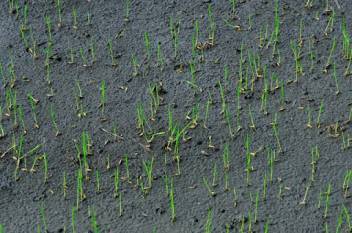State Offers Highest Subsidy in India for DSR Farming, Aims for Sustainable Paddy Cultivation
KURUKSHETRA, 6 April 2025: In a major push towards sustainable agriculture, Haryana Agriculture Minister Shyam Singh Rana announced that the state government has set an ambitious target to cover 3 lakh acres of farmland under Direct Seeding of Rice (DSR) during the upcoming paddy season.
The minister was speaking at a workshop in Kurukshetra focused on new rice cropping solutions aimed at conserving water resources and reducing stubble burning incidents. The event was attended by farmers and Deputy Directors of Agriculture (DDAs) from several districts.
DSR: A Water-Saving Solution for Paddy Farmers
Minister Rana emphasized that the DSR method could play a crucial role in halting the alarming decline in groundwater levels across the state. Traditional paddy cultivation consumes between 3,000 to 4,000 litres of water to produce just 1 kg of rice. In contrast, DSR eliminates the need for transplanting saplings, resulting in significant water savings and reduced labour costs.
“Haryana is emerging as a leading state in promoting sustainable paddy farming practices. With DSR, farmers can save both water and input costs while improving cultivation efficiency,” said the minister.
Highest Subsidy of ₹4,000 Per Acre for DSR Farmers
To encourage large-scale adoption of the technology, the Haryana government is offering a subsidy of ₹4,000 per acre — the highest in the country — to farmers opting for DSR.
“Government schemes are empowering farmers to shift towards environmentally-friendly farming techniques. We are not only addressing water scarcity but also supporting farmers economically,” Rana added.
Paddy Cultivation in Haryana: Current Status
Paddy is one of the most important kharif crops in Haryana, with a production of over 59.21 lakh tonnes recorded during 2022-23. Currently, paddy cultivation covers around 30 lakh hectares of farmland in the state.
The minister further informed that by 2024, 50,540 farmers had already adopted DSR technology, covering approximately 1.8 lakh acres. The government aims to expand this to 3 lakh acres in the coming paddy season.
Why DSR is the Future of Paddy Farming
DSR technology not only conserves water but also addresses key challenges such as labour shortages and rising input costs. By avoiding the traditional method of transplanting rice seedlings, farmers can save time and effort, leading to higher productivity.
Additionally, promoting DSR helps in tackling the issue of stubble burning, a significant environmental concern in northern India.
Image credit: knowledgebank.irri.org























